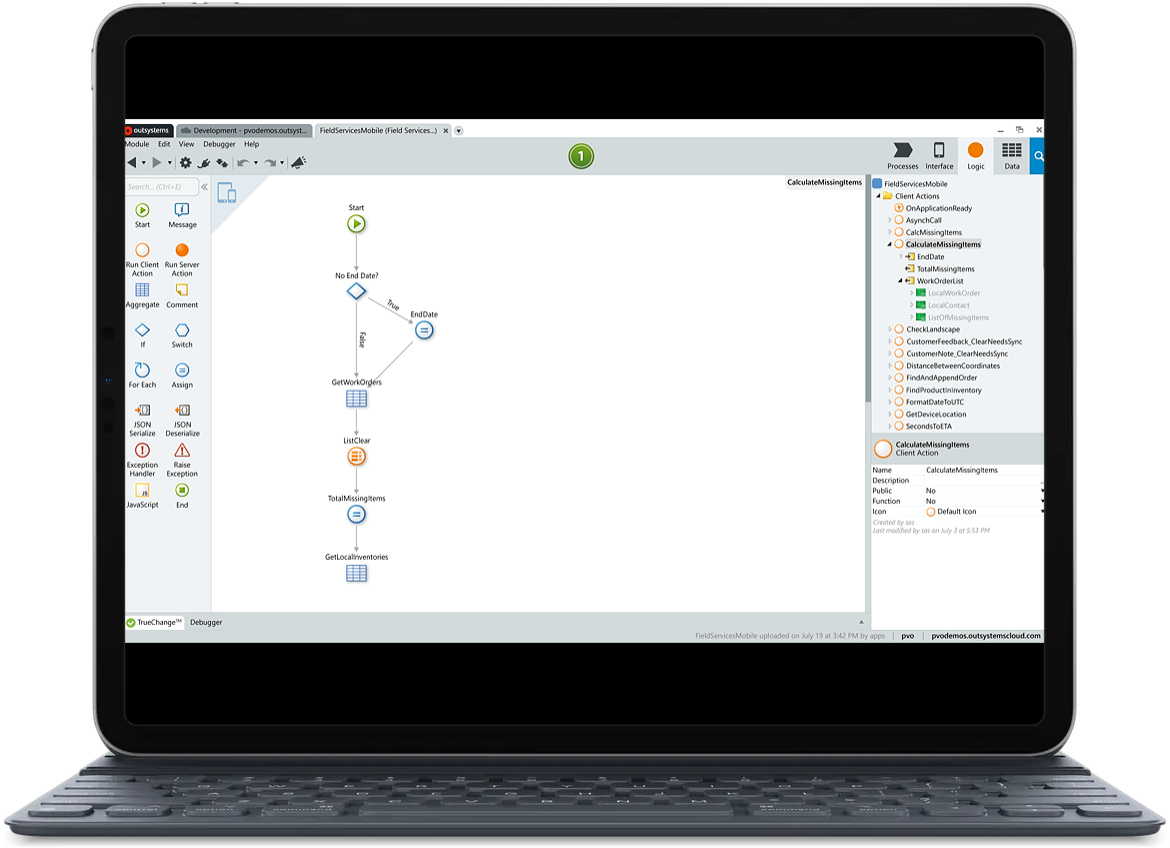More and more, business leaders are wondering if Low-Code is the solution to their business challenges.
Although Low-Code platforms have been in use for years in central Europe and the United States, they have recently begun to be talked about in Spain. And that is why Low-Code awakens, almost equally, the interest and doubt of those who constantly have to face the challenge of aligning technology and business with the aim of driving business growth.
Since each organization has an operational infrastructure and application map, it's not strange that there are some doubts about how a Low-Code application can fit into its architecture and, above all, whether it will really be the optimal response to the many challenges it faces on a day-to-day life.
Clearly we cannot speak for all Low-Code platforms but we can refer to OutSystems, which has been recognized by Gartner and Forrester as the leading low-code platform company.
Recurring doubts
When considering adopting this platform, CEOs and CIOs raise some questions, including whether OutSystems is capable of covering digital transformation whatever trigger. The answer is yes because it allows you to create the solution that the business demands, whether for end customer B2B or B2C, or operational tools aimed at optimizing and automating activities for employees or replacing a legacy, highly customized system.
Another recurring question is: Is this platform able to integrate with my company's current BBDD and ERP? The answer is yes because it has more than 3,200 integration components available OutSystems Forge such as Salesforce,Oracle, SAP, DB2, Microsoft Exchange, or Twitter.
Another common question is whether it allows you to create web, mobile and responsive "design" apps,as well as native applications. The answer remains positive because it offers a powerful visual web designer that allows you to create high fidelity and highly customizable interfaces for Smartphone, Tablet and PC. In addition, it includes automatic support to ensure a responsivedesign, making the same version available on all devices with a single click.
For example, it allows you to visually developand deploy native iOS and Android apps, as well as access device functions and sensors, such as camera, GPS, contacts, or image gallery. These apps can be published to app stores or distributed individually using mobile device management (MDM) and mobile app management (MAM) tools.
Chosen by more than 20 different industries
As a Low-Code platform chosen by more than 20 industries in 70 countries, each with its own business rules, regulations and challenges, OutSystems provides a number of tools that enable companies to develop, deploy and manage corporate applications across different channels.
In addition, it offers total flexibility to extend user interfaces with other components in HTML5/Javascript/CSS.
Another ease of the platform is that it incorporates a business process execution engine that integrates a user task box solution, which guides them in the execution of processes. It also includes a business activity monitoring component to measure, review, and troubleshoot business processes. In addition, hybrid, on-premises, public cloud, or private cloud deployments are available, so the platform always aligns with the company's chosen strategy.
Suitable for large, maintainable and reusable architectures, it has extensive reuse capabilities for logical, data, web, and integration components, meaning that any previous development can be reused on the platform. You don't need to copy code between applications, which is a tremendous effort and only leads to duplication of code, with the consequent risks.

Impact/dependency analysis works across all layers, making it easier to detect the impact on the ecosystem by changing a service. These are exposed in a central catalog with direct access for developers.
Finally, if you want to stop using the platform, your applications could be maintained with standard development tools, both in the cloud and on-premises. This is possible because all data is contained in a standard BBDD and applications run on a non-proprietary application stack, so unlike other Low-Code platforms, OutSystems ensures that the company will always have its data and applications available.
Inés Ruiz, Low-Code Solutions Account Manager at Altia
